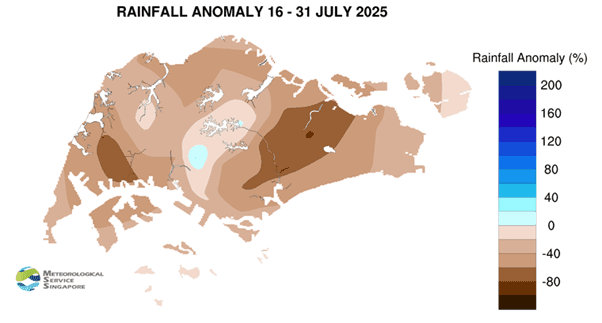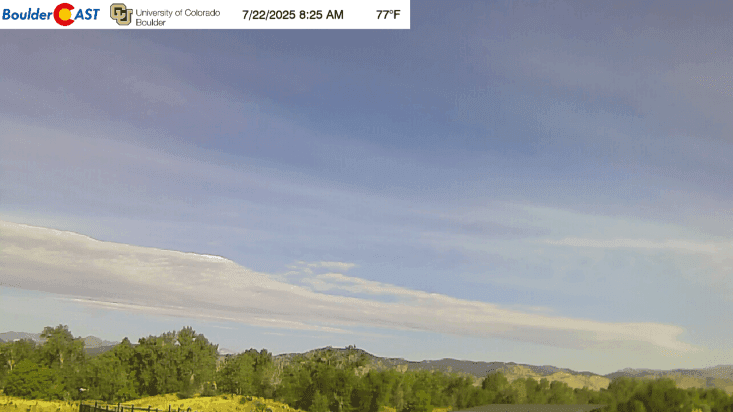The Unseen Architects of Tomorrow: How Weather Forecasts Guide Global Decisions
Uncover the hidden power of weather forecasts. Beyond personal use, learn how climate predictions drive global industries, disaster prevention, and policy in a changing world.
A Daily Ritual, a Deeper Purpose
For many of us, checking the weather forecast is an almost subconscious morning ritual. A quick glance at our phones tells us whether to grab a jacket, an umbrella, or perhaps even apply extra sunscreen. This daily habit, however, masks a far more profound and intricate purpose. Far from merely informing personal wardrobe choices, the meteorological report has evolved into a foundational instrument for critical global sectors. Consider the immense logistical ballet of transportation, whether by air, sea, or land; every flight path, shipping route, and road closure decision hinges on precise weather predictions. Agriculture, too, relies heavily on forecasts for planting, irrigation, and harvesting, where a single unexpected frost or drought can spell economic ruin. Beyond these, the tourism industry plans events and operations, public health agencies anticipate heatwaves or cold snaps, and even military operations depend on atmospheric intelligence. In an era marked by rapid climate shifts, where a single day can swing from scorching heat to torrential downpours or sudden freezes, staying informed isn't just a convenience; it's a strategic imperative. The need to understand what the sky holds is increasingly urgent, driving preparedness and shaping how societies adapt to an ever-changing world.

The Science Beneath the Snapshot: Unraveling Meteorological Complexity
Peeling back the curtain on that seemingly simple weather icon reveals a world of staggering scientific complexity. Predicting the atmosphere's capricious dance is no trivial feat; it involves an intricate interplay of physics, mathematics, and advanced computing. Meteorologists don't just 'guess' what's coming; they analyze vast datasets of atmospheric pressure, temperature, humidity, wind patterns, and cloud cover, gathered from a global network of sensors, satellites, radar, and weather balloons. These raw observations are then fed into sophisticated numerical weather prediction models – supercomputers running complex algorithms that simulate atmospheric processes. The concept of 'probability analysis' is central to this, acknowledging the inherent chaos and uncertainty in fluid dynamics. Each forecast, whether it's a 3% chance of rain during the day or a projected maximum of 27 degrees, is the output of these models, refined by human expertise. This already challenging endeavor is further compounded by climate change, which introduces unprecedented variability and extreme events, making the models work harder and demanding even greater accuracy to anticipate the unpredictable. The quest for precision is a continuous scientific journey, pushing the boundaries of what we can know about our dynamic planet.
Weather's Economic Blueprint: Beyond the Daily Commute
While we might fret over a rainy commute, the economic implications of weather stretch far beyond individual inconveniences, weaving an intricate blueprint across industries. Take agriculture: farmers are perpetually at the mercy of the elements. Accurate forecasts guide decisions on when to sow seeds, when to apply fertilizers, and crucially, when to harvest, directly impacting crop yields and global food security. A missed warning about a hailstorm or an early frost can devastate an entire season's livelihood. The transportation sector, as mentioned earlier, is another prime example. Airlines adjust flight paths to avoid turbulence, shipping companies reroute vessels to dodge severe storms at sea, and road freight planners account for snow or flood warnings to ensure timely deliveries. Tourism, too, thrives or falters based on the weather, influencing everything from beach resort bookings to ski season preparations. Even energy companies rely on forecasts to predict demand for heating or cooling, optimizing power generation and distribution. Businesses make critical investment decisions, manage supply chains, and mitigate risks, all underpinned by reliable meteorological intelligence. In essence, weather forecasts aren't just about what to wear; they're about economic resilience, strategic planning, and safeguarding vast financial interests.
Navigating a Volatile Climate: Forecasts as Frontline Defense
In an era defined by an increasingly volatile climate, weather forecasts have transcended their traditional roles to become a critical frontline defense for public safety and societal resilience. The escalating frequency and intensity of extreme weather events – from devastating floods and prolonged droughts to crippling cold waves and ferocious storms – underscore the urgent need for timely and accurate meteorological intelligence. It's no longer enough to simply know if it will rain; we need to know when, how much, and what impact it will have. Forecasts empower governments and communities to adopt proactive public policies, enabling early warning systems that trigger evacuations, activate emergency services, and deploy resources before disaster strikes. Imagine the difference between a sudden, unannounced flash flood and one where residents have hours, or even days, to prepare. These warnings help prevent 'bad landings' for aircraft, guide search and rescue operations, and inform critical infrastructure protection. The ability to anticipate these phenomena, however challenging, directly translates into saved lives, reduced property damage, and a more robust societal response to the climate crisis. This shift positions meteorology not just as a science, but as a vital public service, a cornerstone of disaster risk reduction strategies worldwide.
The Future Sky: Innovations and Ethical Questions
As climate volatility intensifies, the future of weather forecasting is poised for transformative advancements, but not without navigating complex ethical considerations. The relentless pursuit of accuracy and extended lead times is driving innovation across several fronts. We're seeing a surge in the application of artificial intelligence and machine learning, which can sift through petabytes of data from satellites, ground sensors, and atmospheric models, identifying subtle patterns and improving predictive capabilities beyond what traditional methods allow. Advanced supercomputing power continues to enhance the resolution and speed of global weather models, pushing us closer to hyper-local, real-time forecasts. Miniaturized sensors, drone technology, and even citizen science initiatives are broadening data collection networks, filling gaps in previously underserved regions. However, this technological leap brings its own set of questions. Who owns this increasingly valuable weather data, and who has access to it? How do we ensure equitable distribution of critical warnings, especially to vulnerable populations without reliable internet or power? What are the implications of geoengineering or weather modification, even if theoretical, on global climate patterns and international relations? As we harness these powerful tools, the responsibility to use them wisely, transparently, and for the collective good becomes paramount, shaping not just our daily plans, but the very fabric of our interconnected world.
Related Articles

The Unseen Architects of Our Skies: How Meteorology Navigates a Volatile Climate

The Unseen Architects of Our Skies: How Meteorology Navigates a Volatile Climate

Decoding Tomorrow's Whispers: The Art and Impact of Weather Prediction

Decoding Tomorrow's Whispers: The Art and Impact of Weather Prediction

Weather's New Imperative: How Forecasting Became Our Blueprint for Resilience

Weather's New Imperative: How Forecasting Became Our Blueprint for Resilience

The Sky's Hidden Script: Unmasking Weather's Profound Influence on Earth and Humanity
